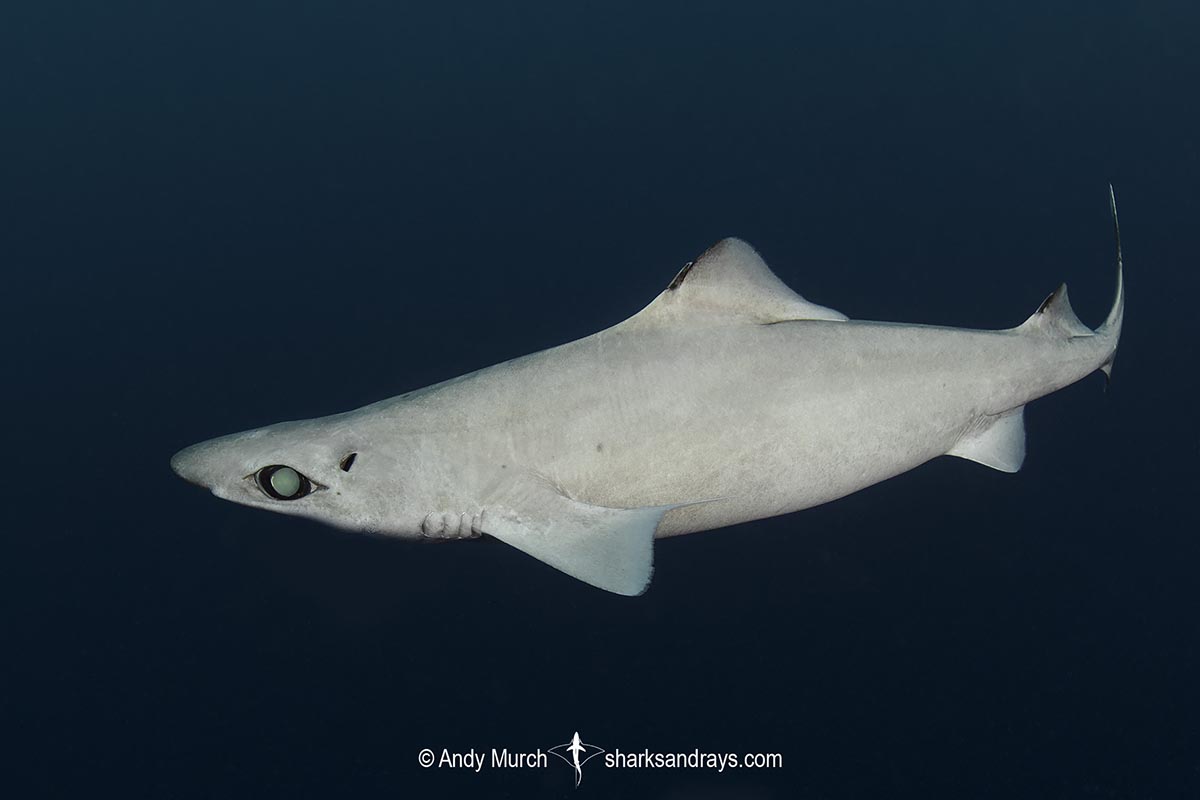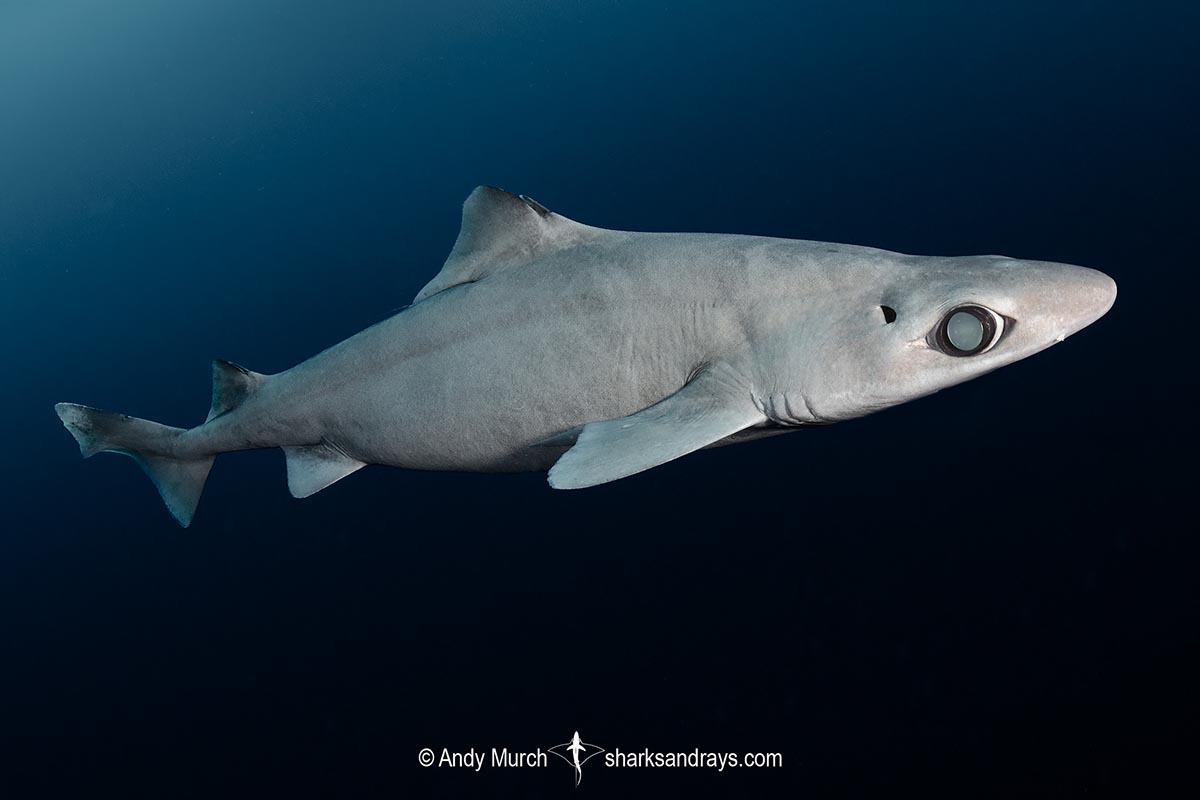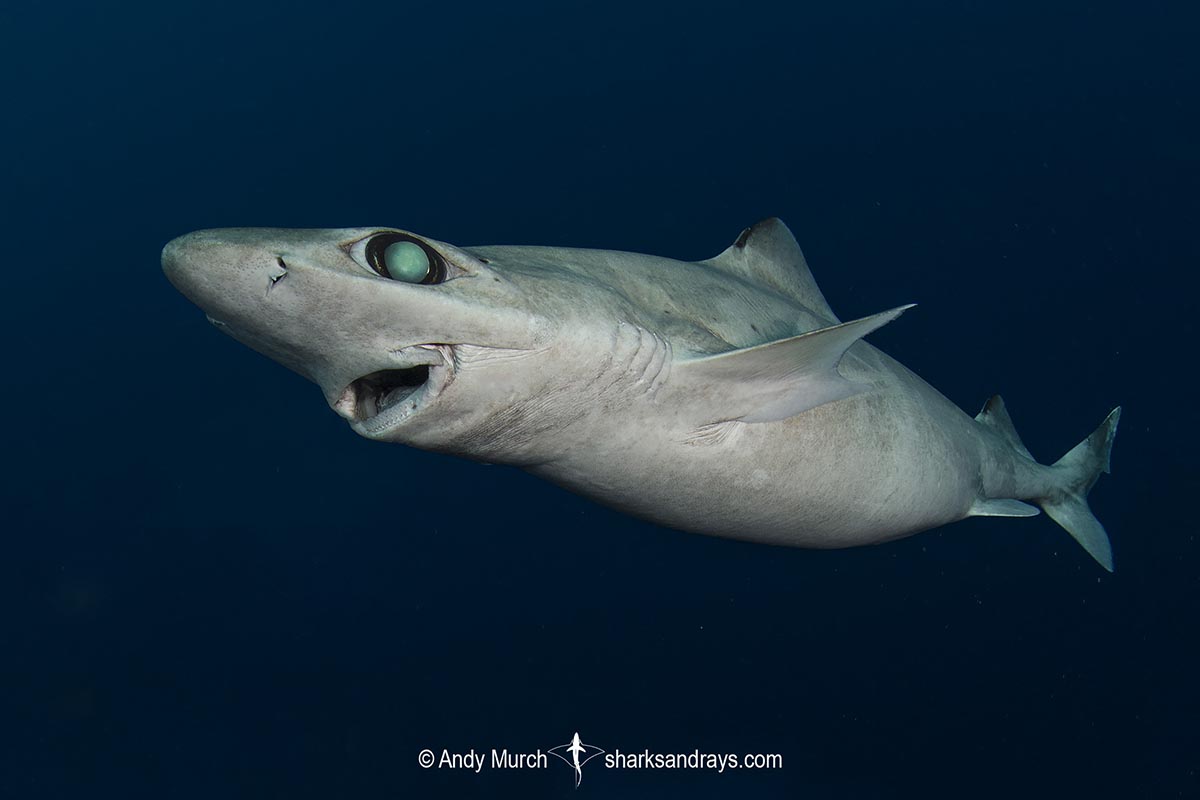Common names
Little Gulper Shark.
Binomial
Centrophorus uyato.
Synonyms
Acanthias nigrescens, Acanthias uyatus, Centrophorus armatus barbatus, Centroporus uyato, Squalus uyato.
Identification
A small shark with a pointed snout, and large green-reflective eyes. Snout length greater than mouth width. Small, spiracle behind eye. Dorsal fins long and low, with anterior fin spines that are less than half the length of the dorsal anterior margin. First dorsal fin origin midway between pectoral fin insertion and free rear tip. Second dorsal origin slightly anterior to pelvic fin free rear tip. Pectoral fin free rear tip long and thin.
Dorsal coloration grey to brownish grey. Ventrum slightly paler than dorsum. Dorsal fins have dusky tips. All fins may have a pale posterior margin.
Size
Maximum recorded length 128cm.

Conservation Status
ENDANGERED
The Little Gulper Shark is slow to mature and has a very low reproductive productivity. It is targeted for its liver oil which is considered to be of the highest quality. It is also a bycatch component in trawl, longline, and setnet fisheries throughout much of its range.
Fishing activity has been intensive where this species is targeted. Since the 1960s in the Philippines, deep-water dogfish fisheries have historically fished regional populations to collapse and then moved on.
In India, a targeted gulper shark liver oil fishery commenced in 2002. There has been a targeted fishery around the Andaman Islands and Sri Lanka since the 1980s. There is also a developing fishery in Somalia.
In the Northeast Atlantic, little gulper sharks are a bycatch in small quantities in Portuguese longline fisheries. They are also recorded in longline and trammel nets throughout the Mediterranean.

Habitat
A deepwater species of the continental slope. From 50-1400m
Distribution
The little gulper shark appears to be a wide ranging species but further research may lead to one or more regional splits. Currently, its distribution includes most subtropical/temperate coastlines but it is noticeably absent from the eastern Pacific.
Reproduction
An aplacental viviparous species (without a yolk-sac placenta). Little size 1-2.
Diet
Feeds on bony fishes and cephalopods.
Gulper sharks have highly distensible mouths that allow them to consume proportionately larger pray than other sharks of their size.
Behavior
Largely unknown. Jose Castro lists the little gulper shark as being the most common centrophorid species in the Bahamas.
Reaction to divers
Not encountered by divers.
Diving logistics
N/A.
What’s new
View our full list of updates
Similar species
Other Gulper Sharks There are at least 14 species of gulper sharks, many of which look very similar. The distribution of many species is poorly understood. Therefore, positive identification is best achieved by DNA Analysis and close examination of tooth and dermal denticle shape.

